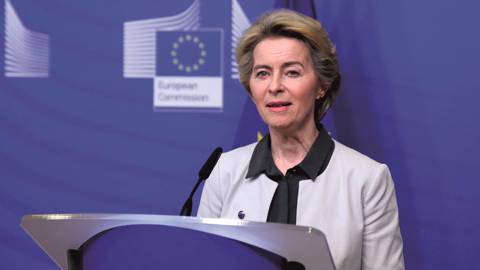Former Japanese Prime Minister Shinzo Abe knew that engagement with China was vital to ease tensions and mitigate risks. But he also knew that to ensure peace and prosperity in the region, engagement had to be complemented by solid economic and security alliances with other major powers, especially the US and India.
CLAREMONT, CALIFORNIA – It has been over a year since Shinzo Abe, Japan’s longest-serving prime minister, resigned due to illness. His successor, Yoshihide Suga, has come and gone. But institutional innovations that Abe spearheaded – namely, the Comprehensive and Progressive Agreement for Trans-Pacific Partnership (CPTPP) and the Quadrilateral Security Dialogue, or Quad – look likely to shape Asia’s geopolitical landscape for a long time to come.
Abe worked tirelessly to deliver the CPTPP, after Donald Trump effectively torpedoed its predecessor pact, the Trans-Pacific Partnership, by withdrawing the United States. The agreement that Abe revived currently includes 11 Asia-Pacific countries, with combined economic output of nearly $14 trillion.
Moreover, the CPTPP’s ranks are set to grow. The United Kingdom formally applied to join the pact last February. In September, China did the same, in an apparent effort to highlight its commitment to free trade – and set itself further apart from the US. Taiwan applied six days later.
If the UK joins the CPTPP, as now seems likely, it will add $2.7 trillion – or about 20% – to the bloc’s total economic output. Dealing with the Chinese and Taiwanese applications will be trickier. Taiwan is technically better qualified to join than China is, but the decision to admit Taiwan and reject China could stoke tensions and even spur conflict – a prospect that CPTPP signatories would prefer to avoid.
But, from a strategic perspective, it is with regard to the US that the CPTPP will make the biggest difference. While Trump is out of the White House, the US has not shaken Trump’s protectionism, and President Joe Biden has not mustered the political courage to join the pact. Yet the CPTPP is integral to the success of US efforts to counter China’s economic influence in Asia. Eventually, Biden should acknowledge this. When he does, he will have Abe to thank for the fact that there is a free-trade agreement in place that the US can join.
Abe’s legacy has been even more consequential and far-sighted in the security arena. He proposed the Quad as a regional security forum – comprising Australia, India, Japan, and the US – back in 2007, during his brief first stint as Japan’s prime minister. Although the Quad was largely inactive for the next decade, the parties agreed to reinvigorate it in 2017, owing largely to Abe’s prodding and China’s growing assertiveness.
The Biden administration now regards the Quad as a critical component of its strategy to keep China in check. In September, the group’s leaders met for an in-person summit at the White House – a gathering future historians will likely point to as a pivotal moment in the Sino-American strategic rivalry.
But the Quad is about far more than diplomatic symbolism. It is also strengthening its joint military capabilities. Last year, it held its first joint naval exercise, Malabar 2020, off the southeast coast of India. It followed up in August with Malabar 2021, held off the coast of Guam.
Given his leadership in forging the CPTPP and the Quad, one might assume that Abe was an unapologetic China hawk, bent on containment. But that assessment overlooks the third pillar of Abe’s geopolitical strategy: direct engagement with China.
In fact, even as he actively promoted the CPTPP and the Quad, Abe took care to ensure that Japan’s relations with China remained stable and cooperative. He visited Beijing in October 2018, and invited Chinese President Xi Jinping to visit Japan in April 2020, though that plan was derailed by the COVID-19 pandemic.
Ultimately, Abe was a supreme realist when it came to China. He knew that bilateral engagement was vital to ease tensions and mitigate risks. But to ensure peace and prosperity in Japan, such engagement had to be complemented by solid economic and security alliances with other major powers, especially the US and India. Only then would China take Japan seriously, treating it as an equal partner in East Asia.
Today, the third pillar of Abe’s China strategy appears to have collapsed. The Biden administration convinced Suga to ramp up Japan’s security commitments in ways that China’s rulers view as hostile. The Sino-Japanese relationship soon reached a new low.
Fortunately, Suga’s successor, Prime Minister Fumio Kishida, might have more room to maneuver. Thanks to Abe’s strategic foresight, Japan is now in a stronger geopolitical position than China. Indeed, China needs Japan more than Japan needs China, because China must maintain a workable relationship with Japan if it wants to frustrate America’s strategy of economic decoupling and security containment. So, if tensions begin to subside, China may well be the one to reach out to Japan in an effort to restore relations. Such an initiative would leave all of Asia better off.






CLAREMONT, CALIFORNIA – It has been over a year since Shinzo Abe, Japan’s longest-serving prime minister, resigned due to illness. His successor, Yoshihide Suga, has come and gone. But institutional innovations that Abe spearheaded – namely, the Comprehensive and Progressive Agreement for Trans-Pacific Partnership (CPTPP) and the Quadrilateral Security Dialogue, or Quad – look likely to shape Asia’s geopolitical landscape for a long time to come.
Abe worked tirelessly to deliver the CPTPP, after Donald Trump effectively torpedoed its predecessor pact, the Trans-Pacific Partnership, by withdrawing the United States. The agreement that Abe revived currently includes 11 Asia-Pacific countries, with combined economic output of nearly $14 trillion.
Moreover, the CPTPP’s ranks are set to grow. The United Kingdom formally applied to join the pact last February. In September, China did the same, in an apparent effort to highlight its commitment to free trade – and set itself further apart from the US. Taiwan applied six days later.
If the UK joins the CPTPP, as now seems likely, it will add $2.7 trillion – or about 20% – to the bloc’s total economic output. Dealing with the Chinese and Taiwanese applications will be trickier. Taiwan is technically better qualified to join than China is, but the decision to admit Taiwan and reject China could stoke tensions and even spur conflict – a prospect that CPTPP signatories would prefer to avoid.
But, from a strategic perspective, it is with regard to the US that the CPTPP will make the biggest difference. While Trump is out of the White House, the US has not shaken Trump’s protectionism, and President Joe Biden has not mustered the political courage to join the pact. Yet the CPTPP is integral to the success of US efforts to counter China’s economic influence in Asia. Eventually, Biden should acknowledge this. When he does, he will have Abe to thank for the fact that there is a free-trade agreement in place that the US can join.
Abe’s legacy has been even more consequential and far-sighted in the security arena. He proposed the Quad as a regional security forum – comprising Australia, India, Japan, and the US – back in 2007, during his brief first stint as Japan’s prime minister. Although the Quad was largely inactive for the next decade, the parties agreed to reinvigorate it in 2017, owing largely to Abe’s prodding and China’s growing assertiveness.
SPRING SALE: Save 40% on all new Digital or Digital Plus subscriptions
Subscribe now to gain greater access to Project Syndicate – including every commentary and our entire On Point suite of subscriber-exclusive content – starting at just $49.99.
Subscribe Now
The Biden administration now regards the Quad as a critical component of its strategy to keep China in check. In September, the group’s leaders met for an in-person summit at the White House – a gathering future historians will likely point to as a pivotal moment in the Sino-American strategic rivalry.
But the Quad is about far more than diplomatic symbolism. It is also strengthening its joint military capabilities. Last year, it held its first joint naval exercise, Malabar 2020, off the southeast coast of India. It followed up in August with Malabar 2021, held off the coast of Guam.
Given his leadership in forging the CPTPP and the Quad, one might assume that Abe was an unapologetic China hawk, bent on containment. But that assessment overlooks the third pillar of Abe’s geopolitical strategy: direct engagement with China.
In fact, even as he actively promoted the CPTPP and the Quad, Abe took care to ensure that Japan’s relations with China remained stable and cooperative. He visited Beijing in October 2018, and invited Chinese President Xi Jinping to visit Japan in April 2020, though that plan was derailed by the COVID-19 pandemic.
Ultimately, Abe was a supreme realist when it came to China. He knew that bilateral engagement was vital to ease tensions and mitigate risks. But to ensure peace and prosperity in Japan, such engagement had to be complemented by solid economic and security alliances with other major powers, especially the US and India. Only then would China take Japan seriously, treating it as an equal partner in East Asia.
Today, the third pillar of Abe’s China strategy appears to have collapsed. The Biden administration convinced Suga to ramp up Japan’s security commitments in ways that China’s rulers view as hostile. The Sino-Japanese relationship soon reached a new low.
Fortunately, Suga’s successor, Prime Minister Fumio Kishida, might have more room to maneuver. Thanks to Abe’s strategic foresight, Japan is now in a stronger geopolitical position than China. Indeed, China needs Japan more than Japan needs China, because China must maintain a workable relationship with Japan if it wants to frustrate America’s strategy of economic decoupling and security containment. So, if tensions begin to subside, China may well be the one to reach out to Japan in an effort to restore relations. Such an initiative would leave all of Asia better off.